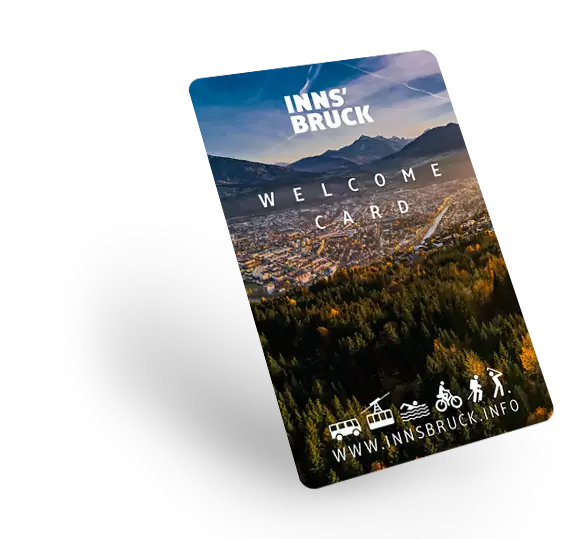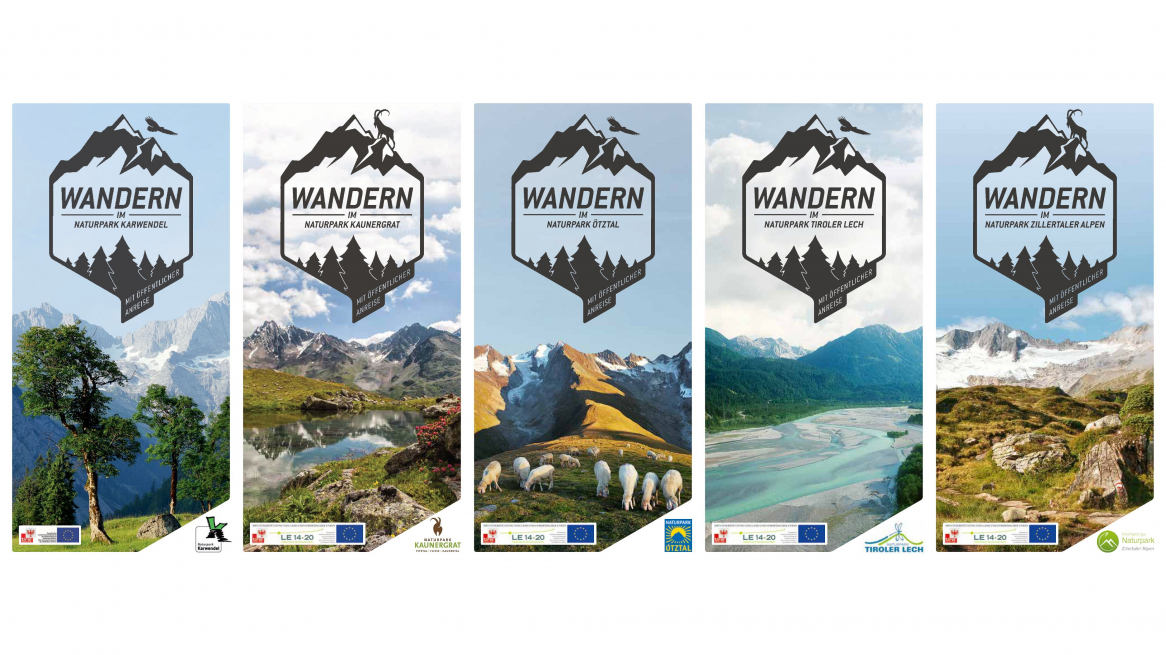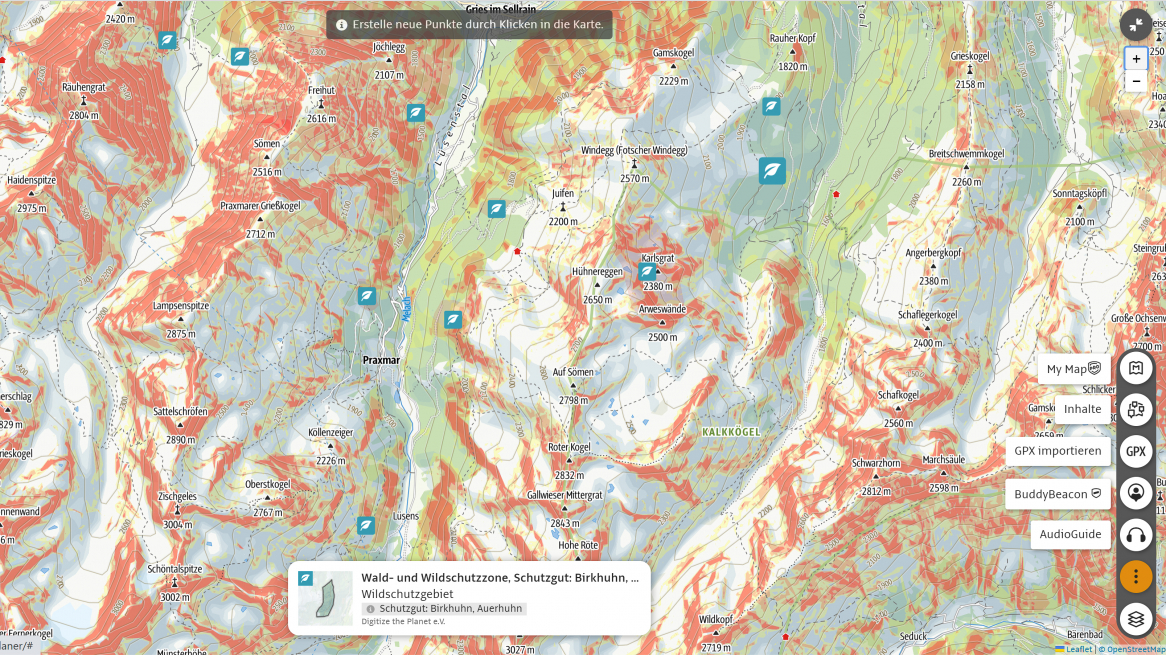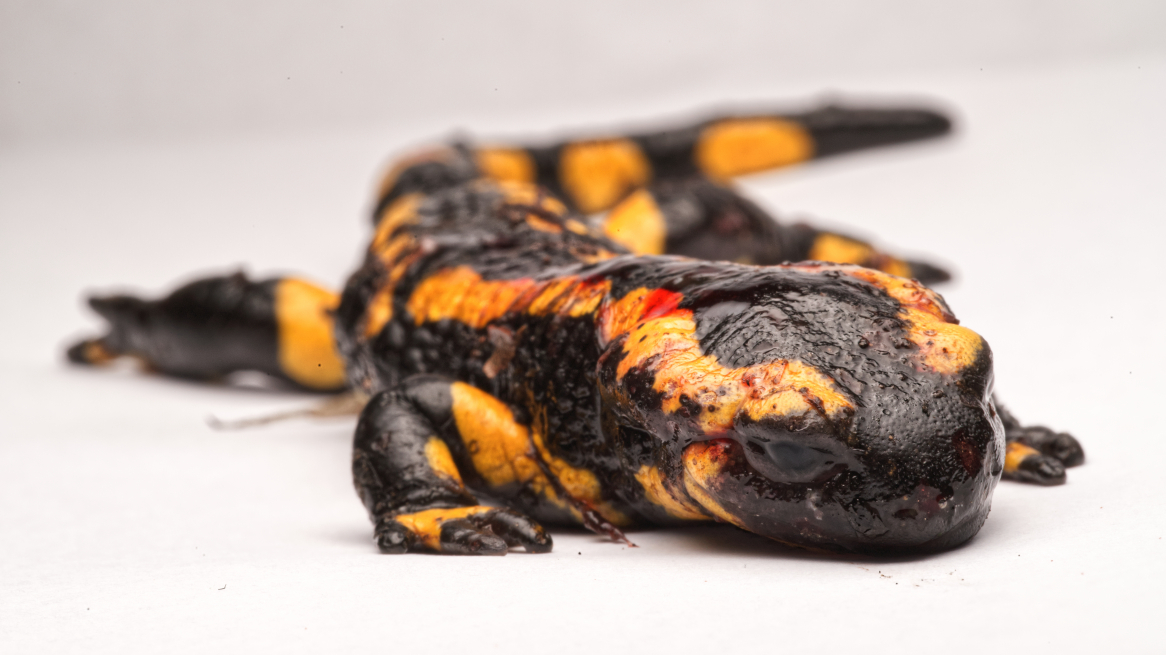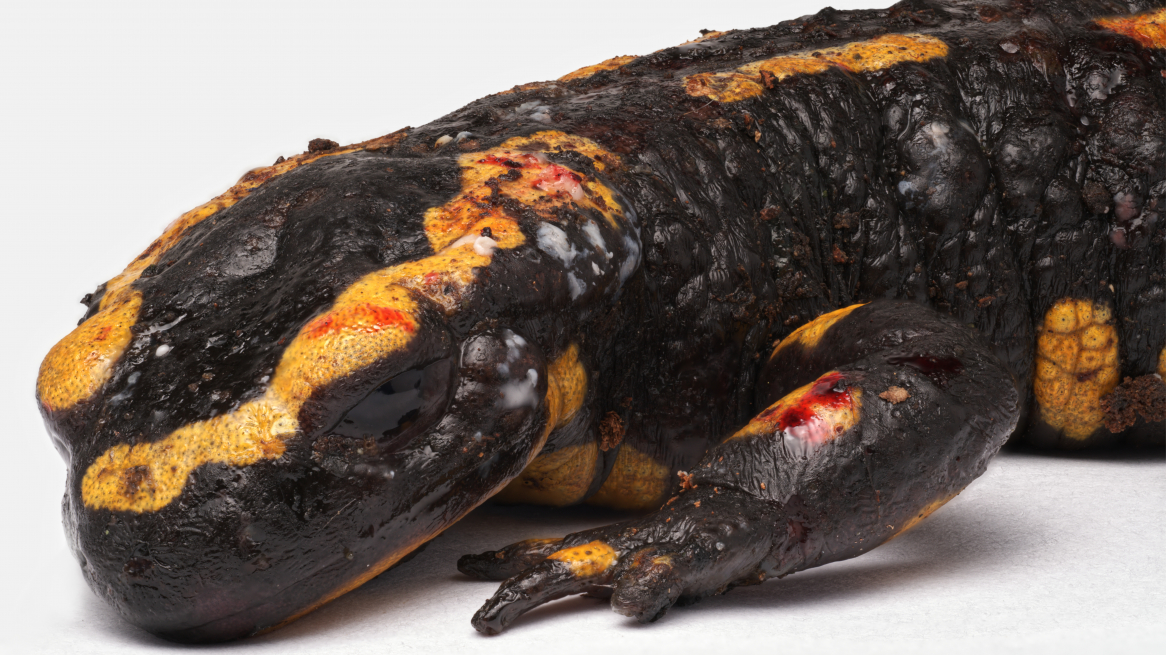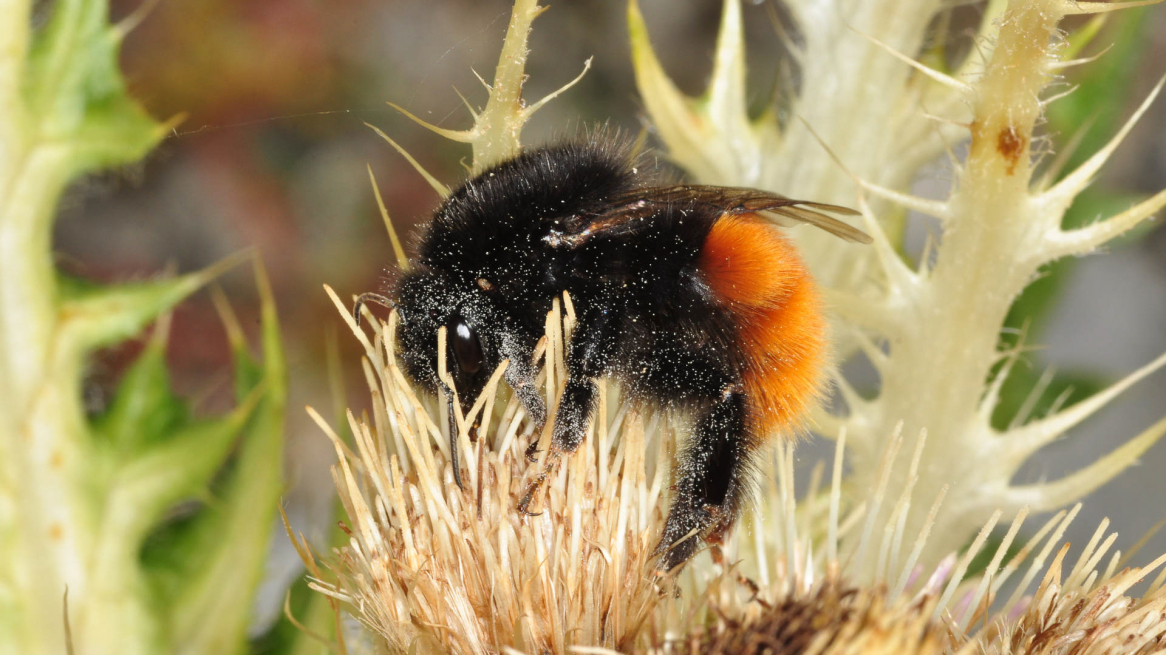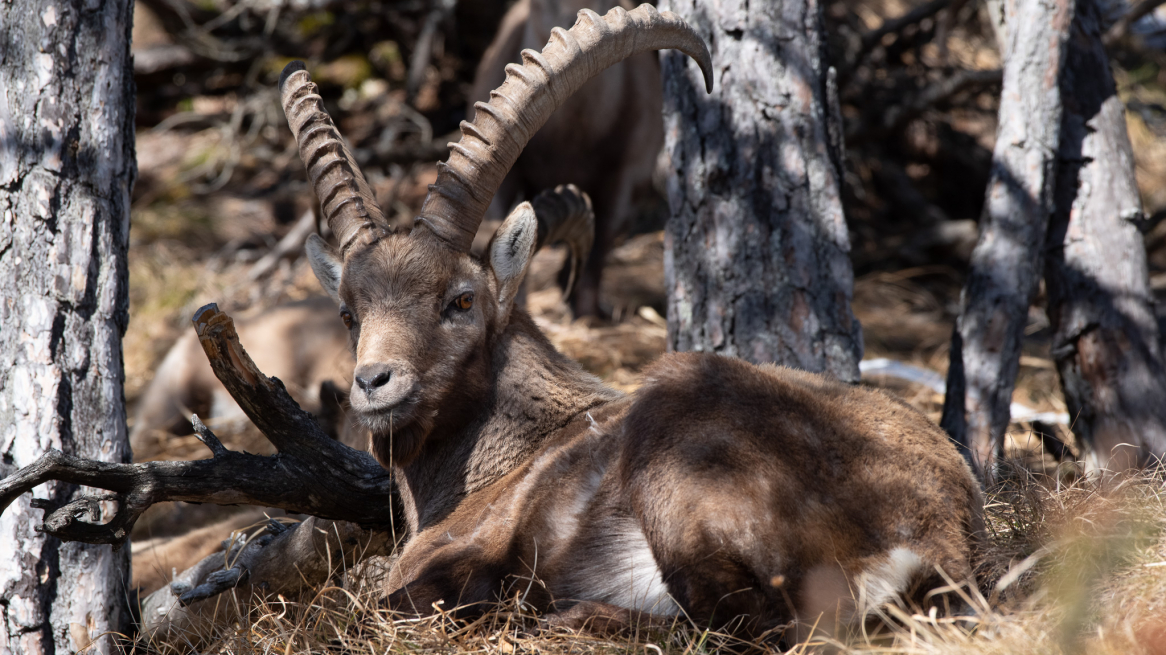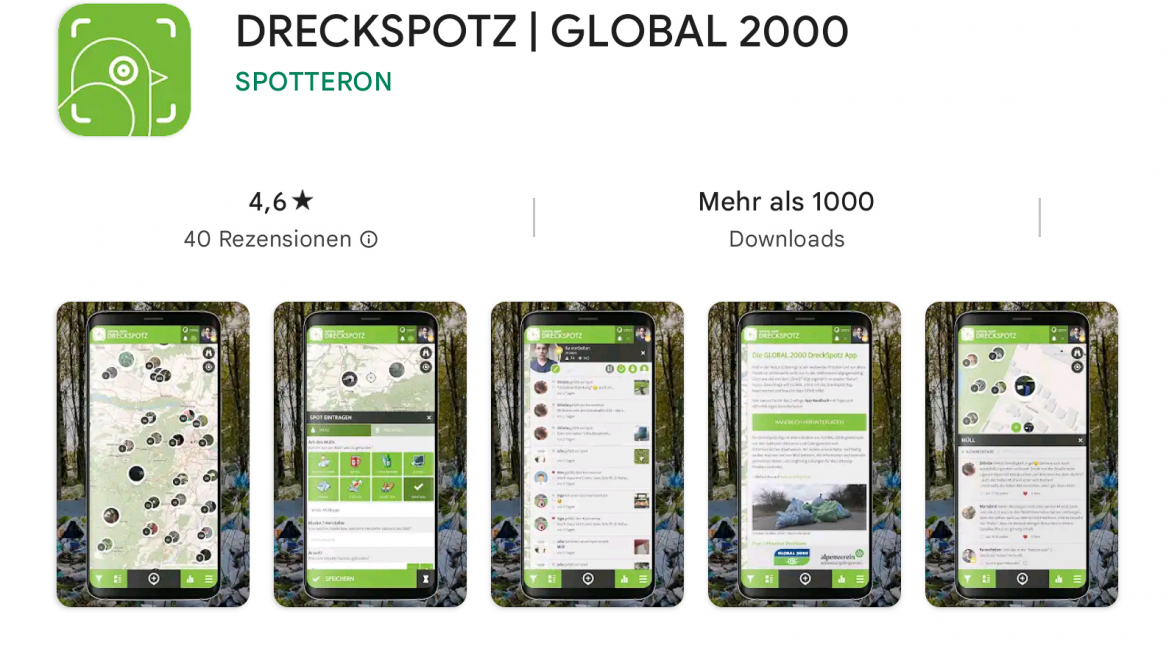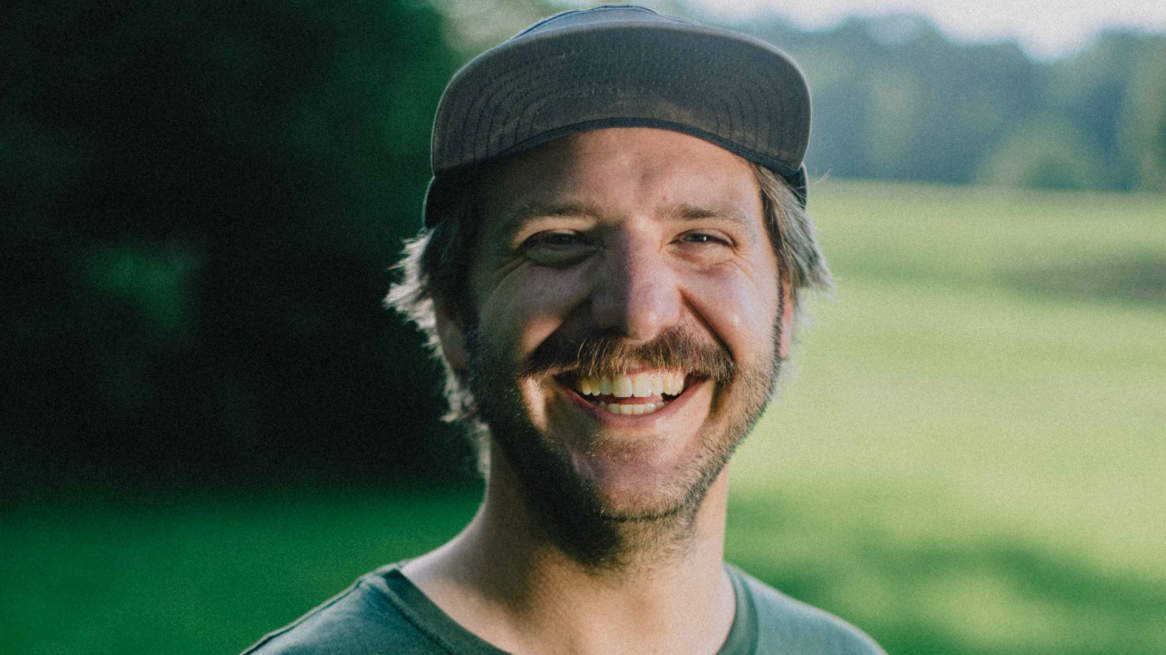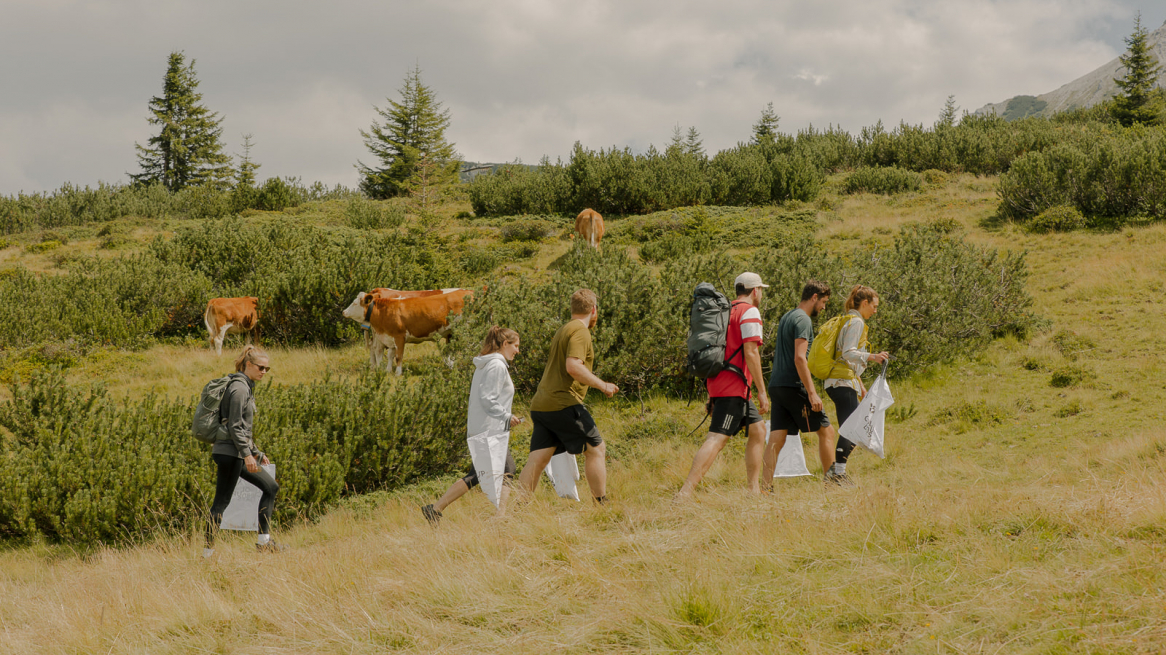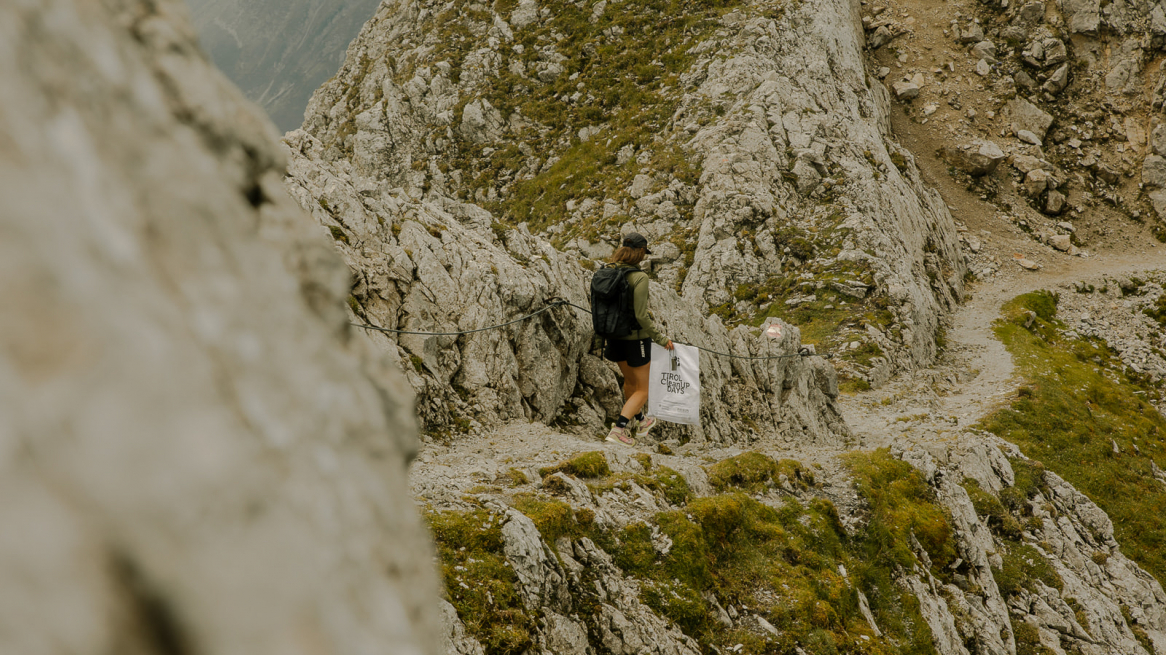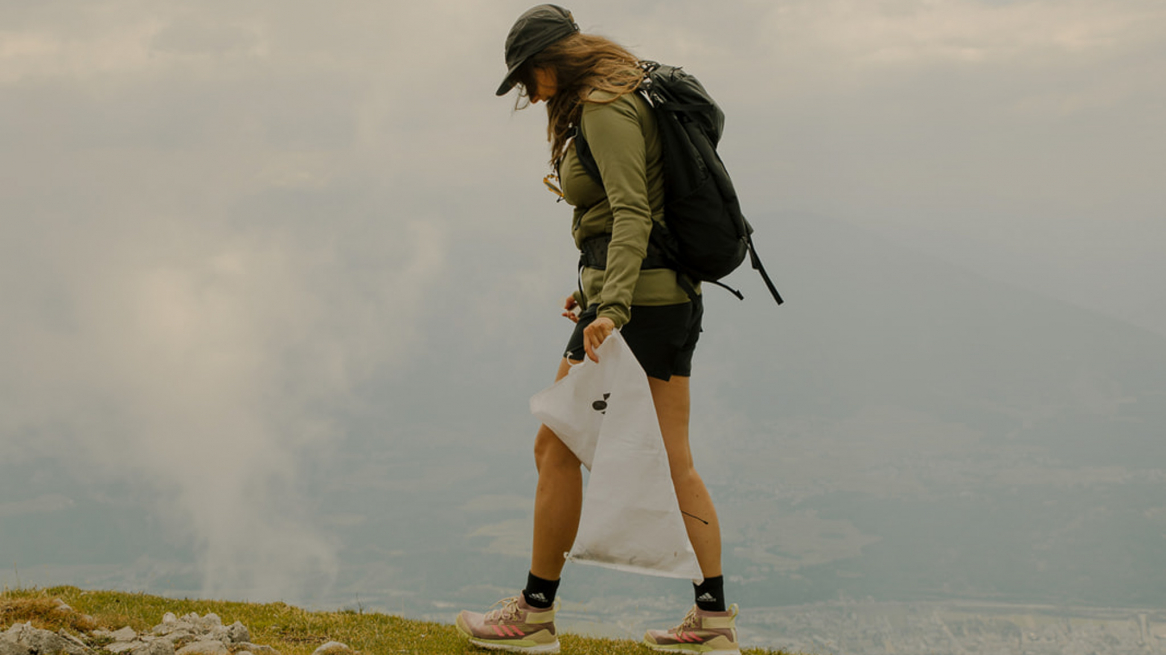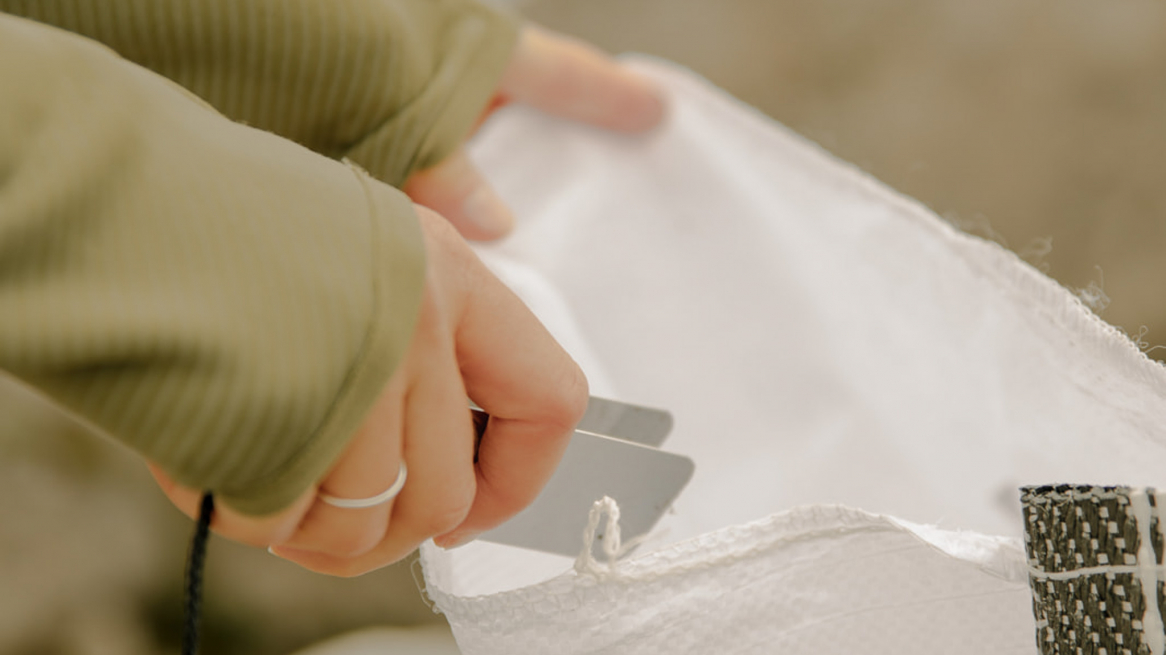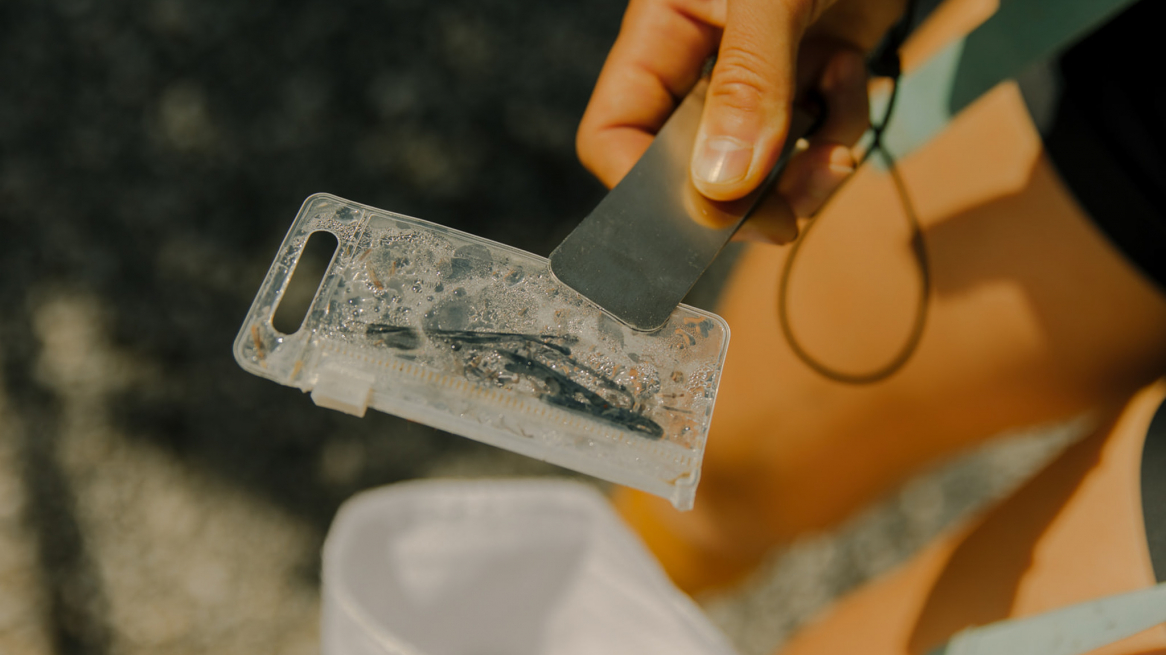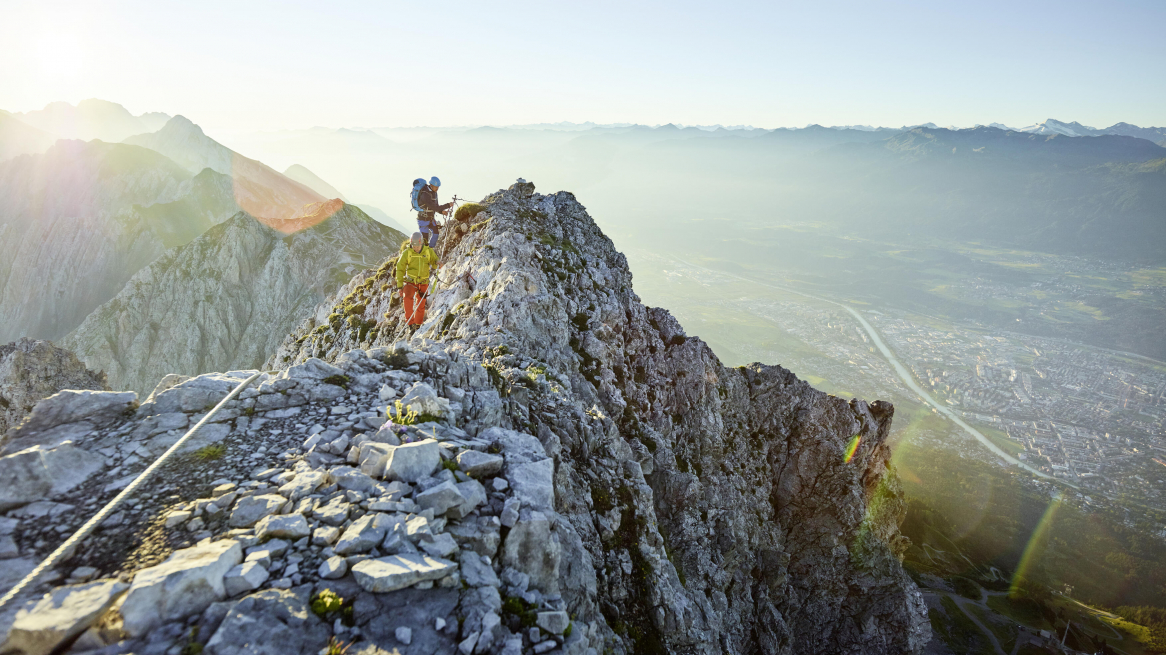
A guide to mindful behavior on mountain tours
The Tyrolean mountains offer us relaxation, tranquility, fresh air, breathtaking views and beautiful landscapes. Everyone who goes on a tour in this unique habitat leaves a footprint that can have a negative impact on the environment. In this post we will look at how we can minimize this footprint and even contribute something positive.
Attentiveness already during tour planning
Even before the mountain boots are laced up to tread the path to the summit, there are a few things you can do to keep the negative impact on the environment as low as possible.
Getting to the start of the tour
Often the starting point of many tours is in quiet valleys away from towns, which still serve as refuges for wildlife. By traveling by public transport you can reduce the disturbance of wildlife by traffic noise and reach your destination in a more relaxed and climate-friendly way.
In the Innsbruck region, many starting points for tours are easily accessible by public transport and are also free for guests with Welcome Card. © Innsbruck Tourismus
Another good option are the five Tyrolean nature parks with the WÖFFIS. In these five hiking guides you will find a selection of the most beautiful and varied tours with public access.
Forest and game protection zones
Especially in winter, it is important to pay attention to protection zones when looking at the map. Protected zones provide wildlife with a place to retreat without disturbance, be sure to avoid these areas on your tours.
Interactive maps like those of the Alpine Club already have these protection zones integrated. More detailed information about the protection zones and their rules of conduct can be found at the program Bergwelt Tirol – Miteinander erlebenwhose goal is to show ways of a nature-oriented and conflict-free use of nature.
Fungus-free on the next tour
Amphibians don't have it easy in Tyrol; in addition to habitat loss and the cutting of their migration routes by roads, this group of animals also has to contend with a fungus. In the mountains, this particularly affects salamanders and newts, which are threatened by Bsal (Batrachochytrium salamandrivorans) are endangered. Infection is particularly bad for salamanders, where the fungus initially eats holes in the skin and leads to an agonizing death after twelve to 18 days.
The most important thing to do to avoid the spread of this fungus is to thoroughly clean your hiking gear, especially your shoes. A detailed guide on how to help these wonderful animals can be found here.
Attentiveness to plants
Alpine plants have adapted to the special living conditions in the mountains, some of them are even endemicwhich means that they only occur in a certain area. The alpine flora not only contributes to a beautiful landscape, but also forms an important component in the alpine ecosystem. It helps stabilize the soil by preventing erosion and retaining water. It also serves as a habitat and food source for many animals.
The alpine bumblebee, for example, is found at altitudes between 2,500 and 3,100 meters and is thus dependent on these highly specialized plants.
Stay on the paths
In order not to damage plants, it is absolutely necessary to stay on the marked paths. Please avoid "shortcuts through the greenery": since paths that have already been trodden flat are readily used by subsequent hikers, in the long run this can mean that no more vegetation is possible in these places and new, unwanted paths are created.
Do not pick flowers
Alpine flowers such as edelweiss or gentian are particularly popular souvenirs and are picked again and again despite their high protection status. This not only deprives insects of important food plants, but also prevents the plant from spreading. Most alpine plants are under strict protection, and violations of this can be very expensive. Here you will find a small overview of some protected alpine plants.
Mindfulness towards animals
One thing you must never forget when hiking in the mountains: You are in the habitat of numerous wild animals. To avoid disturbing or endangering them, you can follow these tips.
What helps the plants also helps the animals
Wildlife are also creatures of habit, and some of them can become accustomed to disturbance, for example along busy routes. Here, because the danger is usually predictable, the animals react with less stress and flight behavior. The situation is different when they are repeatedly and unpredictably disturbed. High stress potential is provided, for example, by recreational athletes who walk off the usual routes, make rapid movements or approach from above. This can lead to the animals' escape distances becoming greater and greater or to them abandoning areas altogether.
Please do not feed
Photos of marmots eating out of your hand can be found again and again on social media. What looks cute and may generate a few likes can have serious consequences for the animals. In most cases, feeding wild animals is not appropriate for the species and can lead to serious illness or even death. The animals lose their shyness towards humans and even pass this on to their offspring. In some cases it leads to the fact that wild animals penetrate ever closer into settlement areas and partly cause devastation. The animals then often referred to as "problem cases" are caught or even shot, whereby the actual problem case was usually a human who deliberately fed the animals or unconsciously attracted them with discarded food scraps.
The dog must unfortunately be on a leash
Even if you would like to give your companion on four paws free rein: Where wild animals occur, the dog should be on a leash. "My dog doesn't hunt" - many a dog owner is convinced of this, but it only lasts until it happens for the first time. Once the hunting instinct is awakened, one usually no longer has control over the situation. Even if the hunt is unsuccessful, the pursuit causes stress and mortal fear in the wild animals. Especially in winter, the increased energy consumption can lead to the death of the pursued animal.
Please do not pet
Watching wild animals from a distance is certainly one of the most beautiful experiences you can have on a mountain tour. You should always keep a certain distance so as not to expose the animals to unnecessary stress. Basically, most wild animals that you might encounter on mountain tours are flight animals, but if they are in mortal fear or want to defend their young, they can also defend themselves. Especially towards young animals correct behavior is important, because again and again seemingly helpless young animals are taken or touched, although they are not in distress. A few tips for the correct handling of young animals offers the Austrian Society for the Protection of Animals.
Hiking on mountains of garbage
Probably no one wants that, but unfortunately garbage is a constant companion on our mountain tours. That you do not simply dispose of trash in nature should be self-evident, but there is still some room for improvement.
No garbage no garbage
The easiest way to avoid trash on the mountains is to not bring any up with you. Of course, the packaged cereal bar is a convenient source of energy, but simply taking unpackaged provisions with you instead can even prevent the bar packaging being accidentally blown away by the wind. Somewhere, however, the provisions must be stowed, durable snack boxes made of stainless steel are best suited for this, they are easy to clean and are sometimes even suitable as a cutting board.
Reusable drinking bottles
Having enough to drink is especially important on mountain tours. It's best to fill your drink into a stainless steel water bottle, they are very light, and unlike glass bottles, they can withstand most falls without any problems. Many models are also available with thermal function, so that the refreshing drink remains cool even after long hikes.
Quality instead of quantity
In order to avoid waste in mountain equipment as well, it is preferable to rely on long-lasting products. High-quality equipment has its price, but is usually characterized by better performance and a longer period of use. Many well-known brands now focus on sustainability in their products, often avoiding environmentally harmful materials and sometimes even offering a repair service. More information about sustainable outdoor clothing can be found at Utopia.
Make it clean again
You can avoid trash yourself, but how do you get the trash that already exists off the mountains? Fortunately, there are a few ways to do it yourself and have fun in the process.
Dreckspotz-App
The Citizen Science project initiated by Global2000 and the Austrian Alpine Association Citizen Science Project not only helps to rid the mountains of trash, but even provides important data for research. The team of the research project wants to use the collected data to identify PlasticAlps to identify garbage hotspots, to better understand the problem of garbage pollution in nature and to find new solutions.
PATRON PLASTICFREE PEAKS
A nature without plastic waste, for this vision stands the association Patron Plasticfree Peaks. Among other things, they are the organizers of the Tirol CleanUP Dayswhich will take place from 18. to 21 May 2023 for the second time. What exactly is involved and how you can be part of it, you will learn in a short interview with founding member and association chairman Christian Böhm.
Dear Christian, what prompted you to found the association Patron Plastikfree Peaks, and since when has it existed?
Christian Böhm: "We started the first CleanUP Days in 2020 with Patron in the Allgäu region and were immediately met with great enthusiasm. The whole thing then took off in the first two years in such a way that in 2021 we decided to organize CleanUP Days in a non-profit association and expand it to a larger tour in several regions. The goal is to inspire as many people as possible and together give something back to nature. Founding an association was the logical conclusion there, to provide a home for everyone who wants to get involved with Clean-Ups."
How did the name of the association come about?
"Patron means in many languages as much as guardian or protector. With our actions we want to awaken exactly this protector instinct. Everyone has a Happy Place, to which he / she has a special connection. If these places are then also freed from trash, all the better."
How do you see the current situation regarding plastic pollution in the mountains, and what changes would you like to see?
"Currently, it is safe to say that it is mostly cleaner in the mountains than in many places that are densely populated. Nevertheless, the 'bit' of trash doesn't belong there either. Our experience over the last few years has shown that what we find is usually related to our consumer behavior - i.e. packaging waste that individuals have with them on their tours. How the garbage ends up in nature is often not comprehensible in retrospect. The fact is that it doesn't belong there, and we at Patron would be pleased if everyone who is out and about in nature would do the simple thing and take any leftover trash with them."
What initiatives have you launched to raise awareness about plastic waste, and what has the response been like?
"First and foremost, of course, there are our CleanUP Tour tour stops, where we have many thousands of participants every year. Everyone who takes part here and collects litter in their free time has already taken a big step. The feedback from the participants is consistently positive. You can also see that the participants are having fun. In addition, the participants are seen by other people on their tours. This often leads to nice conversations and exchanges. In this way, the CleanUP idea is also spread. In addition, we are currently building a portfolio of lectures, excursions and workshops to deliver awareness of different sustainable issues outside of CleanUP Days in the future."
Do you also collaborate with other organizations or associations, or are there any that support you in your projects?
"Yes, cooperation work is super important for us! We could never pull off CleanUP Tour without support. In addition to sponsors and participating regions, content-related topics on the environment and nature conservation are also part of CleanUP Days. Here we always try to work with regional initiatives and provide information here as well."
Some things you certainly find more often than others. What is the item you find most often when collecting trash?
"There are definitely classics that you find over and over again. In addition to cigarette butts and beer mats, in recent years that has of course been a lot of FFP2 and other masks and, unfortunately, always a lot of handkerchiefs."
When collecting garbage, you probably always come across objects that you wouldn't expect. What was the most bizarre object you found so far?
"We often find the most bizarre items along watercourses, because a lot of the debris is exposed or washed away by high water. We've found laptops and sewing machines there. Last year we also found a fully functional bicycle in a hedge. I use that every day now to get to the office."
Do you have an approximate overview of how much trash has already been collected through your projects?
"Since our events are organized on a decentralized basis, i.e. the trash can be dropped off at many locations, the exact amount is not recorded. In addition, the weight itself is not necessarily representative. Someone who collects in a remote valley will certainly find less than someone who collects by a river, for example. Nevertheless, both participants make the same contribution. That's why we decided to communicate about numbers of participants and routes cleaned. After all, that's what it's all about in the end, what you've achieved together."
How long would it take for the various wastes to rot on the mountain ?
"Organic material rots over a foreseeable period of time. Plastics are much more durable. In the mountains, it also depends a lot on temperature and snow, as this naturally slows down the decomposition processes. In short, the degradation processes are slower on the mountain than in the valley."
You started in the Allgäu Alps, and now you're active in Tyrol and even Italy, which is incredibly impressive! Do you have any plans to expand your sphere of activity?
"There is a lot of dynamism in our area of activity. In recent years, many new regions in the Alpine region have been added quickly. Currently, this has given us a tour that is now running for the third year, and the individual regions that are also involved every year. That's great, because you can build on the success of the previous year and continue to improve and expand the events over the years. As a highlight, however, this year we will leave the Alpine region for the first time and head for the North Sea. More information will follow when the time comes. At the moment, however, our focus is clearly on the German-speaking Alpine region."
From May 18-21, Tirol CleanUP Days will take place for the second time. Who can participate, how do you get involved and what to do when it starts?
"It's very simple. Anyone can participate! The best thing is to put together a team, because it's always more fun together. Then you pick a day and a route on which you want to collect trash, and enter everything into our map on our homepage. On the map you can also see all the other tours that have already been registered, as well as the stations where and when you can pick up your free trash collection equipment and return the trash after the tour. Participants are allowed to keep the equipment after the tour and are welcome to reuse it."
Are there already ideas for projects you have planned for the future?
"Our goal is to clean up our nature with 100,000 participants in the next few years. To do this, we will constantly expand and improve our CleanUP events. In line with our motto 'From a simple act to a collective movement', we want to create awareness for the issue of litter in nature on a broad level and do our part to preserve it."
Are there any tips you'd like to share with our readers to help combat plastic pollution?
"Yes, of course! On the one hand, you can avoid the risk of losing trash yourself first. A lot of the trash you find is packaging. That's why we recommend, where you can, to take your food packaging-free with you into nature. Where you can't, it's great to have a good sealable container or bag with you to safely bring your trash back home. In the second step, it is always good to have a small garbage bag or gloves with you that if you find something, you can act. This does not take up much space in the backpack. All participants of the CleanUP Days have, yes, a CleanUP Kit, which they are welcome to reuse."
Dear Christian, thank you very much for the inspiring interview and good luck for the future.
In conclusion, there's really only one thing left to say: Get to the CleanUP Kits and up the mountains!
Similar articles
Board the train at your home station, a leisurely dinner, perhaps a nightcap before going to bed,…
Spring has arrived and the snow has started to melt in the mountains. Spring flowers and trees…
Mrs. Holle has generously provided us with a fresh blanket of snow. An impressive 50 centimetres fell…
The barn with the ski rental on Igl's village square is getting a bit long in the…

